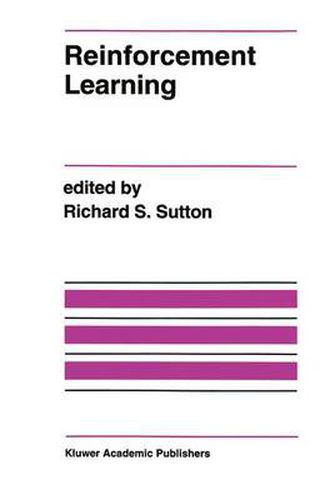Readings Newsletter
Become a Readings Member to make your shopping experience even easier.
Sign in or sign up for free!
You’re not far away from qualifying for FREE standard shipping within Australia
You’ve qualified for FREE standard shipping within Australia
The cart is loading…






This title is printed to order. This book may have been self-published. If so, we cannot guarantee the quality of the content. In the main most books will have gone through the editing process however some may not. We therefore suggest that you be aware of this before ordering this book. If in doubt check either the author or publisher’s details as we are unable to accept any returns unless they are faulty. Please contact us if you have any questions.
Reinforcement learning is the learning of mapping from situations to actions so as to maximize a scalar reward or reinforcement signal.The learner is not told which action to take, as in most forms of machine learning, but instead must discover which actions yield the highest reward by trying them. In the most interesting and challenging cases, actions may affect not only the immediate reward, but also the next situation and through that all subsequent rewards. These two characteristics - trial-and-error search and delayed reward - are the two most important distinguishing features of reinforcement learning. Reinforcement learning is both a new and old topic in AI. The term appears to have been coined by Minsky (1961) and independently in control theory by Waltz and Fu (1965). The earliest machine learning research now viewed as directly relevant was Samuel’s (1959) checker player, which used temporal-difference learning to manage delayed reward much as it is used today. Of course learning and reinforcement have been studied in psychology for almost a century and that work has had a strong impact on the AI/engineering work. One could in fact consider all of reinforcement learning to be simply the reverse engineering of certain psychological learning processes (for example, operant conditioning and secondary reinforcement). Reinforcement Learning is an edited volume of original research, comprising seven invited contributions by researchers.
$9.00 standard shipping within Australia
FREE standard shipping within Australia for orders over $100.00
Express & International shipping calculated at checkout
This title is printed to order. This book may have been self-published. If so, we cannot guarantee the quality of the content. In the main most books will have gone through the editing process however some may not. We therefore suggest that you be aware of this before ordering this book. If in doubt check either the author or publisher’s details as we are unable to accept any returns unless they are faulty. Please contact us if you have any questions.
Reinforcement learning is the learning of mapping from situations to actions so as to maximize a scalar reward or reinforcement signal.The learner is not told which action to take, as in most forms of machine learning, but instead must discover which actions yield the highest reward by trying them. In the most interesting and challenging cases, actions may affect not only the immediate reward, but also the next situation and through that all subsequent rewards. These two characteristics - trial-and-error search and delayed reward - are the two most important distinguishing features of reinforcement learning. Reinforcement learning is both a new and old topic in AI. The term appears to have been coined by Minsky (1961) and independently in control theory by Waltz and Fu (1965). The earliest machine learning research now viewed as directly relevant was Samuel’s (1959) checker player, which used temporal-difference learning to manage delayed reward much as it is used today. Of course learning and reinforcement have been studied in psychology for almost a century and that work has had a strong impact on the AI/engineering work. One could in fact consider all of reinforcement learning to be simply the reverse engineering of certain psychological learning processes (for example, operant conditioning and secondary reinforcement). Reinforcement Learning is an edited volume of original research, comprising seven invited contributions by researchers.